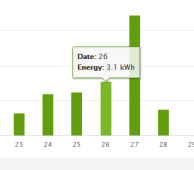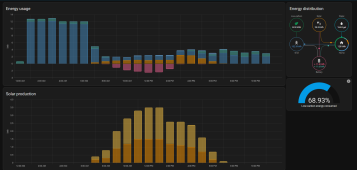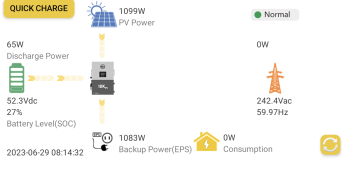DevSecOps
New Member
I've replaced some of my other units with a single 18KPV from EG4. The issue that I have is the grid draw from this unit is constantly at 300-400W. I spoke with Signature Solar tech support and they can't seem to figure out why it's so high either. So here's my setup in a nutshell and maybe someone here can shed some insight.

However the 18KPV is only showing 3.1kWh for the same day.

Multiple times throughout the day the 18KPV is showing 0 power being drawn from the grid, where Sense shows that it's continuously drawing power at about 300W. Anyone know why this inverter is drawing so much power from the grid when the batteries are 100% SOC and more than sufficient power is being supplied from solar?
- This is being used on a building which has multiple servers and communications equipment so it has to stay on 100% of the time
- No grid export at all - any excess is sent to EVs through a combination of home assistant and Wallbox
- Since it's a secondary facility it's a sub panel that the inverter feeds.
- Line in is from the main panel. The main panel is not fed at all from the inverter.
- Batteries are connected and high SOC
- PV is connected and providing in excess power
- CTs are connected correctly within the inverter

However the 18KPV is only showing 3.1kWh for the same day.

Multiple times throughout the day the 18KPV is showing 0 power being drawn from the grid, where Sense shows that it's continuously drawing power at about 300W. Anyone know why this inverter is drawing so much power from the grid when the batteries are 100% SOC and more than sufficient power is being supplied from solar?
Last edited:





